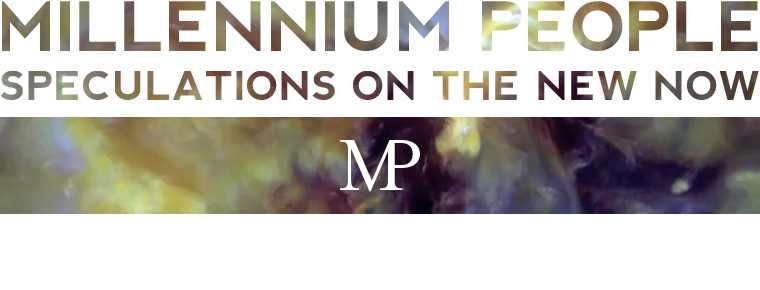
When I got home to
Battersea the fog had completely permeated the suburb, leaving nothing but the orange halos of streetlights and massive neon '
Tescos' sign to guide my navigation. I shudder to think what it was like when this was all still swampland. That's right, I shudder.
+++
I spent the evening at the Architectural Association, listening to a talk by
Toyo Ito entitled 'my first and most recent works'. This was a confusing title, because his first works seemed to encompass 1964 to 2002, and his recent works 2006 to 2009. I can't remember what he did in 2003,4 & 5, but he must regret it. He arrived, and bowed to everyone, and then just launched into an explanation of his beginnings in Japanese, with translator: the end of the 60's/early 70's, when rapid technological advances clashed with student political ideologies. He worked on
Tange's Olympic Stadium, and
Kikutake's
Expo 70 Tower. Ito took inspiration from the
Metabolists, particularly the
Nakagin Capsule Tower, but also from less influential architects like
Shinohara. He described Japan as being divided between Metabolism and another school that
focused on minimalism,
interiority and isolated space. This, he said, led to the current Japanese architectural trend of closed boxes [
What We Do Is Secret] .
In 1971 he wanted to go back to university, but because of the revolts all universities were closed. So he was forced to open his own practise. His explained his first work, the
Aluminium House, [unusually I can't find any good images of this building] as being founded around two
Nagakin capsules that had fallen to the earth. This grounding, for him, signified the end of Metabolism, but also a new beginning. He purposely chose aluminium for its disposable
connotations, as opposed to the solid durability of the
Metabolist modules.
After his famous
White-U building, where he had tried to create a completely isolated and socially disconnected space, he tried to re-engage with society and community through a Dom-
ino mass produced housing system. They only sold one, which went to
Sejima's parents. Towards the mid-eighties he tried to revisit some questions of traditional
ephemerality in modern Japanese architecture. The Japanese house, he said, is like an empty stage [
Kuma]. It only remains to bring in the furniture, which will immediately imply certain relationships – relationships brought to life through rituals.
He touched briefly on the 90's, ending with the
Serpentine and
Brugge pavilions, before brushing over completely the
Sendai Mediatheque and concentrating on his
Tama Art University Library. "I try to avoid becoming reliant on high quality finishes, because if you become too used to Japanese quality, you find it very hard to build elsewhere." In this building, through the furniture and the shelving, he tried to explore what the positions of the body associated with learning might be. What is the physicality of education?
Several questions were asked after the lecture: first
Jencks rambled for a bit, really boring everyone with a long winded discourse, and finally with no question. If he hadn't been
Charles Jencks I'd have reminded him whose lecture it was.
Brett Steele asked a good one: Ito mentioned that he wanted to reject traditional symbolism in architecture, but, since his Dom-
ino system he had in fact been rejecting some of the most fundamental elements of architecture: the column and the grid. None of his buildings after the Dom-
ino possessed columns at all, nor a regular grid. Was this purposeful? Ito smiled and said, in broken English, "this is a subject of current research."
I asked "You mentioned several times the fact that this lecture is mostly translated, how would you say the language, or vocabulary, of Japanese space influenced your work?" He paused. At length, he said "Language is about an ambiguity, and there can often be a
contradiction of expectations in translation. I find this metaphor useful: you go to the water temple, the surface is of still water. You pick up stones of different sizes, and you throw them. Each one creates different ripples. The meaning of the shape comes not from any single pattern of ripples, but through the collection and association of the sum. This is the Japanese language."
One other student asked "how do you conceive of
ephemerality in your buildings?" Ito responded "The notion of
ephemerality may not lie in the structure itself, but in its occupation, as at Sendai..." He spoke in English "But, generally, I should wish any architecture to not rest too long."
Certified Millennium Person.


















